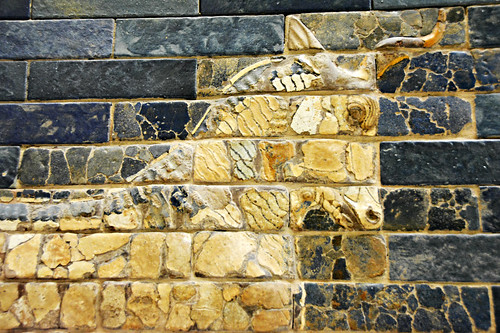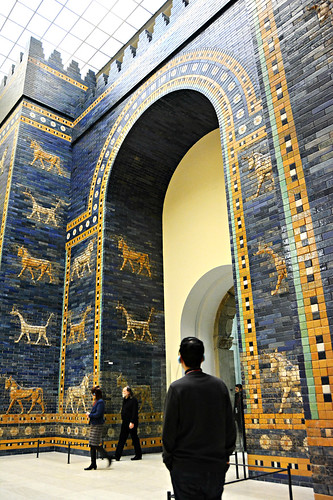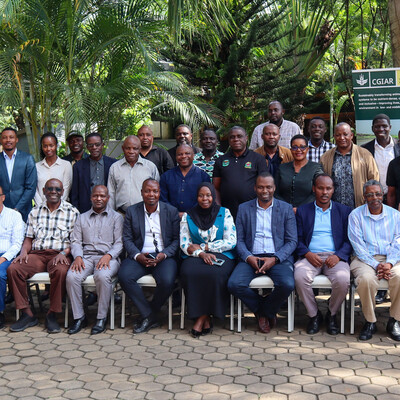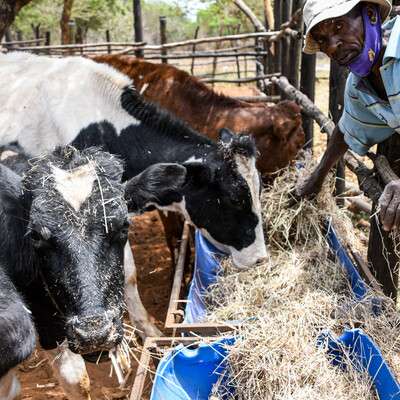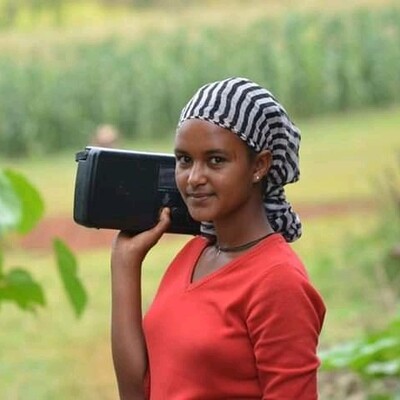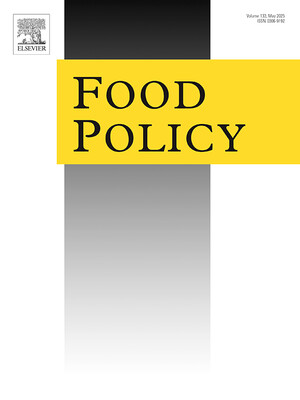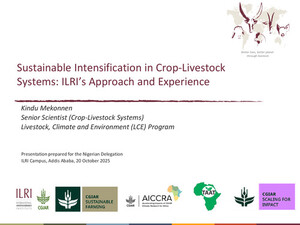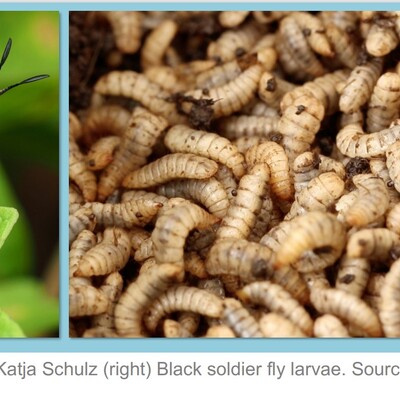
Livestock are taking the limelight in global policymaking fora
From Berlin’s Pergamon Museum, detail of one of the many monumental bull figures—the bull being a symbol of the Babylonian weather god Adad—in the Ishtar Gate of Babylon in Southern Mesopotamia, built from 604–562 BC in the reign of Nebuchadnezzar II. ILRI communications staff paid a visit to the Pergamon at the close of the Global Forum for Food and Agriculture, in Berlin, 18–20 Jan 2018 (photo credit: ILRI/Susan MacMillan).
Recognition of the importance of livestock in addressing some of the world’s greatest challenges, including meeting the United Nations’ 17 Sustainable Development Goals, has been rising sharply in recent years among leading national, political, donor and international bodies. The International Livestock Research Institute (ILRI) works with many of these organizations to help ensure that the world’s many diverse livestock systems evolve in ways that are efficient, profitable, sustainable and equitable.
ILRI is an active partner, for example, in the work of two such global initiatives working towards livestock futures that benefit all the world’s peoples and environments: the Global Agenda for Sustainable Livestock (GASL), a partnership of many public and private livestock-sector stakeholder organizations committed to the sustainable development of the sector, and the Livestock Global Alliance (LGA), which brings together five public institutions with global mandates for livestock: in addition to ILRI, these are the Food and Agriculture Organization of the United Nations (FAO), the International Fund for Agricultural Development (IFAD), the World Bank and the World Organisation for Animal Health (OIE).
A similar focus on livestock has been paid in the last two years by, among many others (this is not an exhaustive list), the Bill & Melinda Gates Foundation (BMGF); the German Federal Ministry for Economic Cooperation and Development (BMZ), Federal Ministry of Food and Agriculture (BMEL), Society for International Cooperation (GIZ) and Global Forum for Food and Agriculture (GFFA); Scotland’s Rural College (SRUC); the United Kingdom’s All-Party Parliamentary Group (APPG) on Agriculture and Development; the United Kingdom’s Department for International Development (DFID/UKAid); the United Nations Committee on World Food Security (CFS) and its High-Level Panel of Experts for Food Security and Nutrition (HLPE); the United Nations General Assembly (UNGA); the United Nations High-Level Political Forum on Sustainable Development (HLPF); the United States Agency for International Development (USAID); the University of Edinburgh; the World Economic Forum (WEF); and the World Food Prize Foundation (WFP).
Detail of stucco relief with wild mountain goats, Sasanian art of the pre-Islamic Persian Empire, 5th–6th century AD (photo credit: ILRI/Susan MacMillan).
In January 2018 alone, for example, four high-profile events put livestock in the spotlight.
(1) 18–20 Jan 2018:
The tenth Global Forum for Food and Agriculture (GFFA), held in Berlin, focused on ‘Shaping the Future of Livestock—Sustainably, Responsibly, Efficiently‘.
(2) 23–26 Jan 2018:
A ‘Meat: The Future‘ initiative was launched by the World Economic Forum at its annual Davos meeting.
(3) 24–25 Jan 2018:
USAID’s Food the Future Innovation Lab for Livestock Systems held its Global Nutrition Symposium in Addis Ababa on ‘The Missing Link: Increasing Availability of Animal-source Foods through Greater Production and Marketing of Quality Feeds’.
(4) 26 Jan 2018:
New UKAid and Bill & Melinda Gates Foundation funding to enhance tropical livestock production in Africa was announced by Bill Gates and UK International Development Secretary Penny Mordaunt in Edinburgh. The funding supports the Centre for Tropical Livestock Genetics and Health (CTLGH) and other collaborative initiatives, such as the Global Alliance for Livestock Veterinary Medicines (GALVmed) and the Supporting Evidenced-Based Interventions (SEBI) project and its three programs on Livestock Losses, Data Collection and Modeling—incorporating communities of practice in Livestock Data for Decisions (LD4D) and Livestock Yield Gaps (LiveGAPS)—and Livestock Technology Interventions.
Check back here to read ILRI highlights of several of the expert and high-level panel discussions held at Berlin’s tenth Global Forum for Food and Agriculture in January.
Reconstruction of the Ishtar Gate of ancient Babylon at the Pergamon Museum, in Berlin (photo credit: ILRI/Susan MacMillan).






